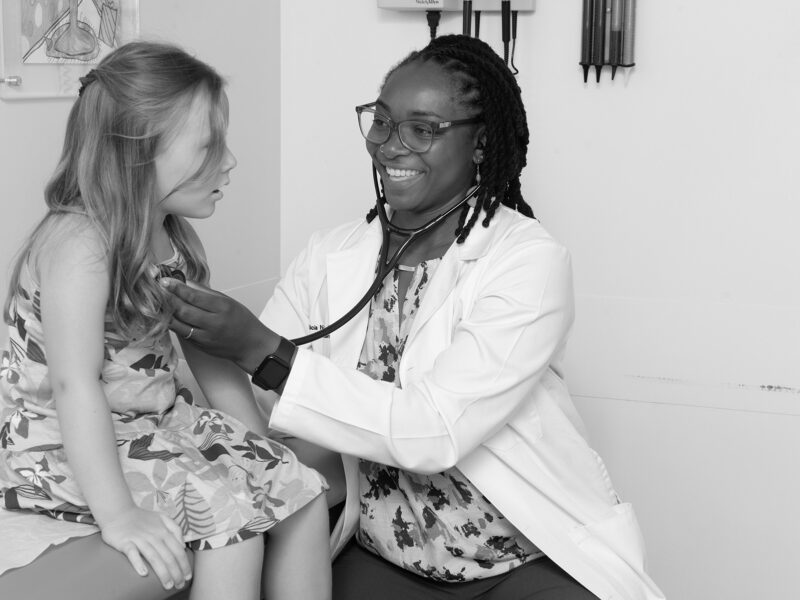Advancing Pediatric Anesthesiology Through Research
Advancing Pediatric Anesthesiology Through Research https://pediatricsnationwide.org/wp-content/themes/corpus/images/empty/thumbnail.jpg 150 150 Joseph Tobias, MD Joseph Tobias, MD https://pediatricsnationwide.org/wp-content/uploads/2021/03/Joseph-D.-Tobias.png- March 17, 2015
- Joseph Tobias, MD
Pediatric anesthesiology research is a relatively new phenomenon. But one clinician-scientist believes it is the key to bringing the field into the “big leagues” of evidence-based medicine.
Over the past 30 years, the field of pediatric anesthesiology has expanded with the recognition of the need for specialized training, the development of fellowship programs and, most recently, the development of a separate board examination by the American Board of Anesthesiology. These changes have led to the recognition of pediatric anesthesiology as a legitimate specialty in the world of anesthesiology.
As part of this greater community, pediatric anesthesiologists now have the responsibility to ensure the continued clinical and academic growth of this specialty. Key to this growth is the development of improvements in techniques of perioperative care, which can only be driven by sound clinical and bench research.
What Pediatric Anesthesiology Research Looks Like
Clinical research in the field of pediatric anesthesiology takes many avenues, but much of it centers on the inherent physiological differences of infants and children related to their physiological and developmental immaturity. When compared to their adult counterparts, these differences can result in alterations in the pharmacokinetics and pharmacodynamics responses to the pharmacologic agents used during the perioperative period.
Research in the field of pediatric anesthesiology, as in other fields, is driven primarily by outcomes. Clinical investigations have sought to determine the causes of perioperative morbidity and mortality in infants and children to allow for investigations to improve outcomes. This line of investigation is facilitated by the Perioperative Cardiac Arrest Registry (POCA), a voluntary reporting system that allows the collection of data regarding adverse intraoperative events. This registry has not only demonstrated the causes of perioperative cardiac arrest in infants and children, but has also allowed the adoption of preventative measures to limit these events.
At Nationwide Children’s Hospital, the Department of Anesthesiology and Pain Medicine maintains an active clinical research initiative thanks to dedicated faculty and three full-time research nurses. Several of the ongoing clinical projects involve techniques of perioperative pain management, including the use of regional anesthesia in infants and children. Many of these involve innovative techniques in neonatal anesthesia and pain management. We are actively involved with pharmacologic trials investigating the pharmacodynamic and pharmacokinetic differences of anesthetic and analgesic agents in pediatric anesthesiology.
The department also maintains several projects related to quality improvement, including the accurate identification of adverse events, mechanisms to decrease medications errors and opportunities to prevent perioperative hypothermia in neonates. Additional lines of research involve the use of cuffed endotracheal tubes in infants and children, non-invasive techniques for monitoring respiratory and hemodynamic function, and techniques for blood avoidance. These latter initiatives have been pushed by our role as a referral center for patients of the Jehovah witness faith, but have also led to innovative new techniques that can limit the need for allogeneic blood products in all patients.
New Directions for Pediatric Pain Management Research
As the field of pediatric anesthesiology continues to expand, the Department of Anesthesiology and Pain Medicine at Nationwide Children’s has continued to expand its clinical research interests. We are actively involved in clinical trials in fields outside of the operating room, including trials in the arenas of pediatric critical care, chronic pain, palliative and hospice care, as well as complementary and alternative medicine. The latter involves innovative studies evaluating the potential role of acupuncture and clinical hypnosis in the treatment of acute and chronic pain in children.
The department has also launched a new program involving bench research in collaboration with The Ohio State University to evaluate the potential negative impact of anesthetic agents on neurocognitive outcomes. These projects use an animal model to investigate the role that inflammation plays in the accelerated apoptosis, which may occur following general anesthesia during the neonatal period and early infancy. The concerns regarding this problem have been summarized by a recent editorial in the New England Journal of Medicine and an article in the New York Times. We are also planning additional translational work that will allow us to investigate whether these inflammatory changes vary based on the type of anesthetic agents. The department is also developing a clinical program using spinal instead of general anesthesia as an option for specific surgical procedures in patients less than 3 years of age.
Keeping the Momentum Going
In addition to strengthening the research base of pediatric anesthesiology for the benefit of patients, we have recently launched some intriguing investigations into faculty wellness with studies to evaluate the effect of sleep deprivation and stress on clinical performance. Many of these studies have resulted in publications in peer-reviewed journals and presentations at national and international meetings. None of this work would be possible without the interest and collaboration of our surgical colleagues as well as our colleagues from pediatrics and many other departments and division within the hospital and The Ohio State University.
Although this wide range of research is a great start toward strengthening the research base of pediatric anesthesiology, it is crucial that other pediatric anesthesiologists and their institutions join us in these efforts. As the field grows, our subspecialty will be in need of solid evidence-based medicine to guide and improve our clinical practice.
By conducting quality improvement work, collaborating on clinical trials and performing bench research at hospitals and universities across the country, we can collectively improve clinical care and elevate the specialty of pediatric anesthesiology to its rightful place in medical science.
References:
- Grady D. Researchers warn on anesthesia, unsure of risk to children. The New York Times. 2015 Feb 25.
- Rappaport BA, Suresh S, Hertz S, Evers AS, Orser BA. Anesthetic neurotoxicity — Clinical implications of animal models. New England Journal of Medicine. 2015 Feb 26, 372(9):796-7.
About the author
Joseph Drew Tobias, MD joined Nationwide Children's Hospital in 2010 as chief of the Department of Anesthesiology & Pain Medicine. Dr. Tobias oversees Anesthesia Services, Pain Medicine and Sedation across the hospital. He leads the Nationwide Children's Hospital Anesthesiology team in the management of anesthesia care for the entire spectrum of surgical diseases from complex congenital heart surgery through solid organ transplantation. Dr. Tobias came to Nationwide Children's Hospital from the University of Missouri Hospital & Clinics in Columbia, Missouri.
-
This author does not have any more posts.
- Post Tags:
- Anesthesiology
- Research
- Posted In:
- In Brief






